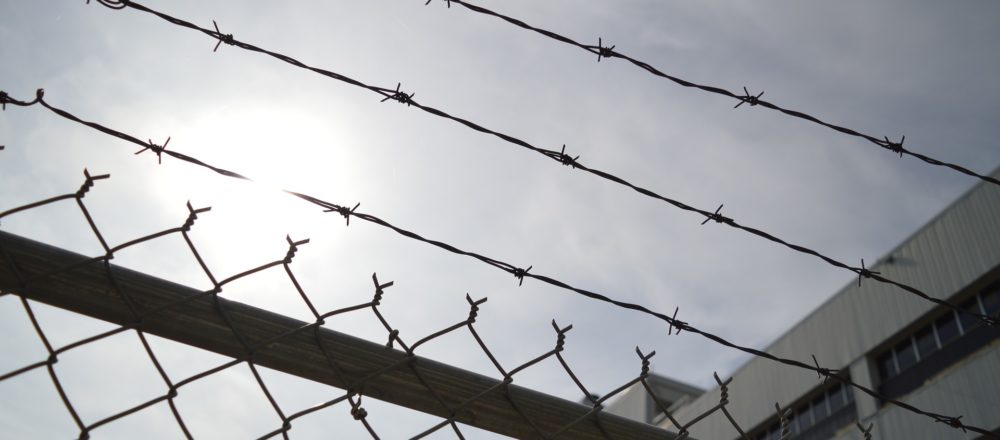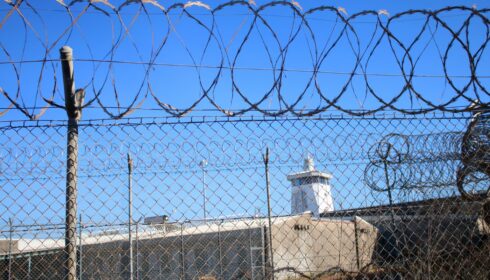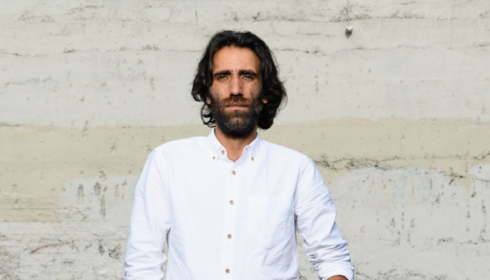The degree of civilization in a society can be judged by entering its prisons
– Dostoevsky, The House of the Dead
Prisons run by private companies are now part of many justice systems around the world. Archaic signs reading ‘Her Majesty’s Prison’ are far from the emerging reality of modern, for-profit facilities. State and Federal governments worldwide have turned to private enterprise to provide better and cheaper services – “efficiency” – contracting out what is traditionally a public responsibility.
In Australia, whether the various trials of private prisons in the last 20 years will give way to sweeping privatisation, remain as is, or revert back to full public stewardship is unclear. What are the prospects of private prisons in Australia, and what are the likely implications for prisoners, prison staff, and public safety?
Square and Round? Public Objective and Private Incentives
As The Economist reported in 2010, the incentives of private prison companies can easily become opposed to the aims of the humane containment and rehabilitation of prisoners – the very purposes of corrective services.
The larger the prison population, the longer the sentences, the larger the payout under government contracts; the more prisoners, the more prisons, the more growth. Cheaper facilities and fewer services mean more profit. These inescapable relationships are the source of the potential conflict of interest, a choice between the objectives of corrective services – to “provide a safe, secure and humane custodial environment” and “program interventions to reduce the risk of re-offending” – and those of a maximum profit and growth.
The real question about private prisons is how things play out in practice.
The Companies & Assurances
Private prisons currently operate in five jurisdictions in Australia: New South Wales, Queensland, South Australia, Victoria and Western Australia. As elsewhere, they are managed under contract with the governments that own the prisons. The companies operating in Australia are the same global behemoths providing their services in the US and UK, in what is a multi-billion dollar industry.
GEO Group
GEO, headquartered in Florida and boasting operations across the US, will in June celebrate 20 years in Australia. The Arthur Gorrie Correctional Facility in Queensland was the first of now four correctional centers and two services centers it runs here, including the Fulham Correctional Center in Victoria and Junee and Parklea Correctional Centers in New South Wales.
GEO’s Business Conduct & Code of Ethics is said to promote “honest and ethical conduct,” “avoidance of conflicts of interest,” “full, fair, accurate, timely and transparent disclosure,” and “compliance with applicable government and self-regulatory organisation laws, rules, and regulations.” Its Culture is aimed at “engaging with the community as a socially responsible company that contributes to achieving desired change” and “providing shareholders with the necessary returns within targets and budgets through dynamic and continuous growth.” At the risk of repetition, one must immediately wonder whether the two aspects of this culture – “social responsibility” and “continuous growth” – do not necessarily amount to a “conflict of interest.”
Serco
Quite differently, Serco presents its business model as one of “organic growth,” while its governing principles provide that it “always operate in an ethical and responsible manner,” “listen” and “if we make mistakes we put them right.” Serco has its origin in the UK, and its sprawling operations share the common cast of ex-government services.
The company has a large number of operations in Australia, most notably the running of immigration detention centres (IDC). As of 2010 it also runs Immigration Residential Housing (IRH) and Immigration Transit Accommodation (ITA) in Sydney, Melbourne, Perth and Brisbane. It promises: “Under the IDC, IRH and ITA contracts, Serco will provide a greater focus on the dignity, respect and well-being of people in our care.”
Serco also runs two private prisons: Acacia Prison (and Court Security and Custodial Services) in Western Australia, and the new Southern Queensland Correctional Centre (which replaced the now decommissioned Borallon Correctional Centre) in Queensland. Of its corrections facilities, Serco boast “a particular focus on restorative justice.”
What is clear again and again from Serco’s website is the fondness for “values” talk, which is epitomised in CEO Christopher Hyman; according to him the thing Serco is least interested in is profit, which is said to be merely a natural by-product of the “values” of putting “people first, then customers, then shareholders.” And where do these values come from? According to Hyman, unhelpfully, from “listening to God.” Hyman must hope governments also listen to the Serco Institute, which produces papers advertising the privatisation, or “Public Private Partnerships,” it prospers on.
G4S
The largest private corrections provider in the world, G4S has numerous correctional and prisoner transport contracts in Australia. Among other operations, it runs Port Philip Prison in Victoria and Mount Gambier Prison in South Australia.
G4S explains its ethos as one of “respect for human rights and the personal dignity of the people entrusted to our care,” and in “going the extra mile and getting it right the first time every time.” It makes no reference to growth – either GEO-style “continuous” or Serco-styled “organic.”
Ideals and Actualities
Certainly all the ethics, human rights, corporate responsibility and restorative justice talk is encouraging as a sign of what GEO Group, Serco and G4S understands is expected of it from the wider community.
While all three companies certainly talk the talk – none more self-assuredly than Serco CEO Chris Hyman – the discussion obviously doesn’t stop there. Experience is the word … and by extension access to and public reporting of it.
Community Groups: stopping at the thought and scrutiny
For some, however, experience isn’t the first word. The very idea of private prisons elicits an intuitive recoil in many because it involves “basically making a profit out of people’s misery.” That’s how Western Australia’s Deaths in Custody Watch Committee (DICWC) spokesperson Marc Newhouse put it, emphasising in the first place an inherent moral concern.
Moving quickly to practice, he explained that the major issue is public accountability, especially in view of the near immunity of private companies to Freedom of Information (FOI) applications. As an example, he pointed to the serious impediments that were encountered in attempting to gain information about the death of an Aboriginal Elder, Mr Ward, who died from heat stroke in the back of a G4S transport vehicle. The cause was faulty air-conditioning; a likelihood about which the government had been repeatedly warned according to former Inspector of Custodial Services, Professor Richard Harding.
Not getting it right the first time is one thing in complicated circumstances, but – as former Queensland Corrective Services Director-General Keith Hamburger said in a 2009 interview – fulfilling the duty of care that has been outsourced to them “is not rocket science.” Other avoidable oversights have also led to deaths in custody. The failure to replace a 20 cent telephone pin in G4S’s Port Philip prison in mid-2011 meant a 55-year-old man died of an asthma attack. A note was found by his body: “Asthma attack buzzed for help no response.”
Private prison operations define themselves by the experiences of those who come in contact with its services, and not just those that make it into publicly disseminated, written reports. In that respect, paragraphs could be written on each company, and not just on their operations overseas. There is no shortage of disturbing anecdotes in Australian’s own private prison experience. Civil society groups such as Serco Watch have no difficultly filling up their Facebook wall with links to stories.
No doubt some would reject the moral indignation as “ideology” and the examples above as picking the worst, while ignoring similar failures in the public system. These facts, however, cannot be honestly dismissed from the overall evaluation. Negative experiences are part of the story of private correctional services, and they deserve attention. At the very least, they are an antidote to publications such as Serco’s cherry-picked Corporate Responsibility Reports. More to the point, then, community groups would not have to take a critical, monitoring role if the companies involved were more forthcoming about their “mistakes” and “putting them right,” and government contracts allowed them to do so. But other incentives apparently prevail over openness.
Unions: opposition or bettering the bargain?
Another set of stories relates not the conditions prisoners are subject to, but those staff encounter. Indeed, the single greatest cost of any prison operation is officer wages. Unsurprisingly, then, in the US wages are significantly higher for officers working in public prisons compared to those working in private ones.
In Australia, the situation differs in different states. In Victoria, as Julian Kennelly of the Victorian Community and Public Sector Union (CPSU) explained, the gap in savings private prisons make over public prisons has closed since the beginnings of privatisation, due to agreements between unions and private prisons on officer pay, conditions and minimum staffing requirements. Over many years of struggle the initial hallmarks of inadequate training of officers and under-staffing have become less acute.
In Western Australia, there is less room for contentment. There the WA Prison Officers’ Union are running an on-going “respect the risk” campaign, one of the four targets of which is privatisation. As spokesperson John Welch explained, the strong opposition to privatisation is due to a less than positive history of experiences. Mr Welch suggested there are “systemic failures” in the private running of prison-related services in the WA (and abroad), which leads him and others in the state to question the logic of the expansion of privatisation which the current government favours.
Beyond dramatic and revealing incidents, such as the case of Mr Ward or the escape of prisoners from embarrassingly inadequate holdings at the Supreme Court, Mr Welch also questions whether the number of staff and their training are adequate to responsibly manage the occasionally tense scenarios to be expected in medium- and maximum-security facilities. As for the desire to reduce staffing levels, he explained, it inevitably leads to less safety, undermining the welfare of prisoners and staff alike.
Private companies in WA, unlike those in Victoria, have resisted minimum staff requirements being on the collective bargaining table. There is evidently a more stubborn wish there to cut costs, and with it quality, in the pursuit of a wider cost savings-gap. This attitude has led to strong opposition to private prisons by the likes of the Prison Officers’ Union, along with community groups in Western Australia, with some success. A long line of politicians have signed the “respect the risk” pledge, and recently the campaign to have the Eastern Goldfields Prison remain in the public sector was successful, an outcome Mr Welch called a “big victory.”
Savings? The 2012 Productivity Report
Beyond quality from the perspectives of prisoners and prison staff, the privatisation rationale of costs savings can be questioned.
On 31 January 2012 the Productivity Commission – the Australian Government’s independent research and advisory body – released its comprehensive Report on Government Services 2012 (Productivity Report). Chapter 8 is dedicated to Corrective Services.
The highest two spenders on prisons are the ACT and Tasmania, which have no private prisons. Next is Victoria, which has the most private prisons, while the cheapest is the Northern Territory, which has no private prisons. Clearly, there is no necessary relationship between privatisation of prisons and taxpayer savings; the outlay depending on other factors, such as the ACT’s expansive prisoner education programs aimed at reduced recidivism, or the Northern Territory’s Spartan conditions.
Again, despite being the State with the most privatised prison system in Australia, Victoria’s expenditure is 19 per cent above the national average for its per prisoner per day running costs.
The public-private interface and ethical murkiness
No doubt governments enter contractual outsourcing arrangements with a sense of necessity, given the complex demands placed on them and the specialised skills private companies claim to offer. There is, however, the danger that skills, capabilities and experience – even where up to scratch and “efficient” on the evidence – are purely technical, uninformed by ethical standards, a culture of public accountability or a culture of human rights compliance on the evidence.
In 2008, Victorian Ombudsman George Brouwer’s annual report contained a sustained focus on potential ethical laxities where decision-making is removed from the public arena: “the promotion of private interests and the corruption of proper administration tend to result.” Summarising his concerns about the public/private sector interface, Mr Brouwer concluded:
It is the greater interaction between the two sectors, as well as the mobility of management between them, that poses special challenges in relation to conflict of interest issues … and confusion about the ethical standards required. The interchange of personnel between the public and private sectors has also contributed to a degree of breakdown in traditional public sector employment cultures and attendant obligations.
The Ombudsman’s first example of this is private organisations that provide prison and correctional services. Deputy Ombudsman John Taylor has also noted the “disproportionately high” increases in complaints received about private prisons in the previous two years up to 2008, expressing concern for the erosion of rights.
In 2009, an Australian Research Council project was begun with the aim, as described in the Ombudsman’s 2009 annual report, of assessing “the readiness of staff and management of various types of closed environments to apply human rights in their daily operations.” On 20-21 February 2012, a conference was held at Monash University in Melbourne to present and discuss the results. No distinction, however, was made between public and private prisons and related services in any of the presentations.
And, while the Ombudsman has made no dedicated investigation of the quality of private corrections services since the comments in the 2008 annual report, Deputy Ombudsman John Taylor said a number of isolated criticisms have been made, in particular of the role of the G4S-run Port Phillip prison in the scheme of Victorian corrections. In general, Mr Taylor sees the privatisation of this traditionally public service as an effective hand-off of responsibility on the part of the government. This is not the first time he has expressed such a lament.
One might hope for a future focus on a service quality comparison by an oversight agency, whether the Ombudsman or not, along with a meaningful comparative discussion of costs for services.
Conclusion
The general appeal of privatisation is via an appeal to “efficiency”. Privatisation in general offers an incentive to remain responsive, flexible and therefore efficient. In practice, the appropriateness and success of privatisation must depend on its incidental effects on the wider aims that lie behind the services in question. In many situations it may well be desirable. There are, however, reasons to worry about a conflict between privatisation and the purposes of prisons.
Even if one’s moral reflexes fail to start at the idea of private prisons, the practical experiences of many places (and the political strategies of the same companies abroad, including lobbying for harsh laws) should make one sit up. If not inherently opposed, opposition by unions in many states would likely save years of battle for gradual, minor changes that may mean conditions for staff in private prisons are almost as good as in public ones down the track.
Those interested in ensuring human rights are universal and unconditional also have a reason to oppose private prisons as long as they fail to make information about their operations accessible. For the time being, murkiness remains the defining feature of private prisons. Through the haze, it is hard to see the future prospects of private prisons in Australia.
However, given the lack of savings in the most privatised state, the opaque ethical standards, and the fact that public opinion is clearly against private prisons, it is hard to imagine what is stopping de-privatisataion, though US experience offers some candidates (literally). In the mean time there are potential improvements to be made: demanding shorter contracts, more tenders, minimum staffing requirements nationally, the disclosure of contractual incentives (if not contracts altogether), and the removal of the recourse of private prisons to hide information, given the very public impact of their operations.
“Efficiency” may be a good idea in abstract, but in the corrections context may sometimes be a thin veneer, hiding what should be criminal behaviour. We’d do well to get tough on that.




